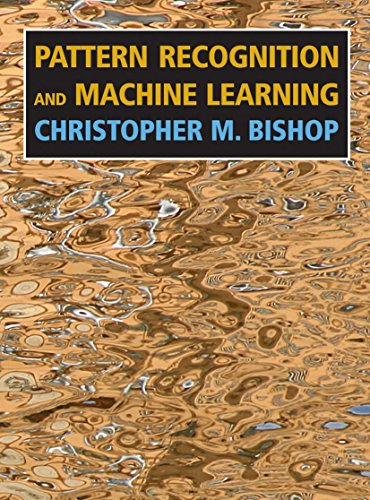Pattern Recognition and Machine Learning (Hardcover)
Christopher M. Bishop
From
AussieBookSeller, Truganina, VIC, Australia
Seller rating 5 out of 5 stars
![]()
AbeBooks Seller since June 22, 2007
About this Item
Description:
Hardcover. Pattern recognition has its origins in engineering, whereas machine learning grew out of computer science. However, these activities can be viewed as two facets of the same field, and together they have undergone substantial development over the past ten years. In particular, Bayesian methods have grown from a specialist niche to become mainstream, while graphical models have emerged as a general framework for describing and applying probabilistic models. Also, the practical applicability of Bayesian methods has been greatly enhanced through the development of a range of approximate inference algorithms such as variational Bayes and expectation pro- gation. Similarly, new models based on kernels have had significant impact on both algorithms and applications. This new textbook reacts these recent developments while providing a comprehensive introduction to the fields of pattern recognition and machine learning. It is aimed at advanced undergraduates or first year PhD students, as wellas researchers and practitioners, and assumes no previous knowledge of pattern recognition or - chine learning concepts. Knowledge of multivariate calculus and basic linear algebra is required, and some familiarity with probabilities would be helpful though not essential as the book includes a self-contained introduction to basic probability theory. Pattern recognition has its origins in engineering, whereas machine learning grew out of computer science. In particular, Bayesian methods have grown from a specialist niche to become mainstream, while graphical models have emerged as a general framework for describing and applying probabilistic models. Shipping may be from our Sydney, NSW warehouse or from our UK or US warehouse, depending on stock availability. Seller Inventory # 9780387310732
Synopsis:
This is the first textbook on pattern recognition to present the Bayesian viewpoint. The book presents approximate inference algorithms that permit fast approximate answers in situations where exact answers are not feasible. It uses graphical models to describe probability distributions when no other books apply graphical models to machine learning. No previous knowledge of pattern recognition or machine learning concepts is assumed. Familiarity with multivariate calculus and basic linear algebra is required, and some experience in the use of probabilities would be helpful though not essential as the book includes a self-contained introduction to basic probability theory.
About the Author: Chris Bishop is a Microsoft Distinguished Scientist and the Laboratory Director at Microsoft Research Cambridge. He is also Professor of Computer Science at the University of Edinburgh, and a Fellow of Darwin College, Cambridge. In 2004, he was elected Fellow of the Royal Academy of Engineering, and in 2007 he was elected Fellow of the Royal Society of Edinburgh.
Bibliographic Details
Title: Pattern Recognition and Machine Learning (...
Publisher: Springer-Verlag New York Inc., New York, NY
Publication Date: 2006
Binding: Hardcover
Condition: new
Edition: 1st Edition
Top Search Results from the AbeBooks Marketplace
Pattern Recognition and Machine Learning (Hardcover)
Seller: Grand Eagle Retail, Mason, OH, U.S.A.
Hardcover. Condition: new. Hardcover. Pattern recognition has its origins in engineering, whereas machine learning grew out of computer science. However, these activities can be viewed as two facets of the same field, and together they have undergone substantial development over the past ten years. In particular, Bayesian methods have grown from a specialist niche to become mainstream, while graphical models have emerged as a general framework for describing and applying probabilistic models. Also, the practical applicability of Bayesian methods has been greatly enhanced through the development of a range of approximate inference algorithms such as variational Bayes and expectation pro- gation. Similarly, new models based on kernels have had significant impact on both algorithms and applications. This new textbook reacts these recent developments while providing a comprehensive introduction to the fields of pattern recognition and machine learning. It is aimed at advanced undergraduates or first year PhD students, as wellas researchers and practitioners, and assumes no previous knowledge of pattern recognition or - chine learning concepts. Knowledge of multivariate calculus and basic linear algebra is required, and some familiarity with probabilities would be helpful though not essential as the book includes a self-contained introduction to basic probability theory. Pattern recognition has its origins in engineering, whereas machine learning grew out of computer science. In particular, Bayesian methods have grown from a specialist niche to become mainstream, while graphical models have emerged as a general framework for describing and applying probabilistic models. Shipping may be from multiple locations in the US or from the UK, depending on stock availability. Seller Inventory # 9780387310732
Quantity: 1 available

